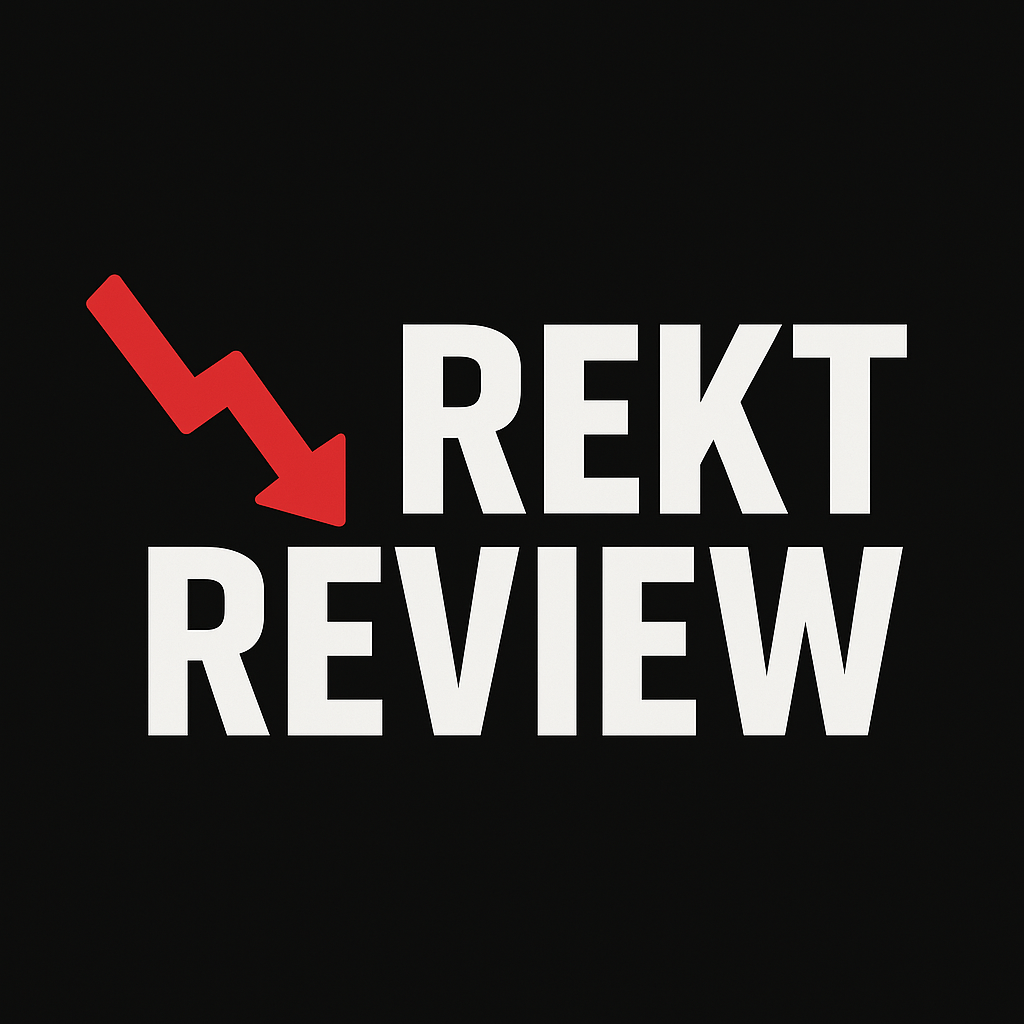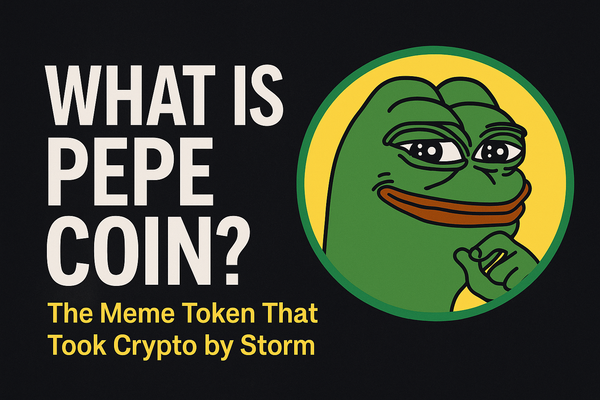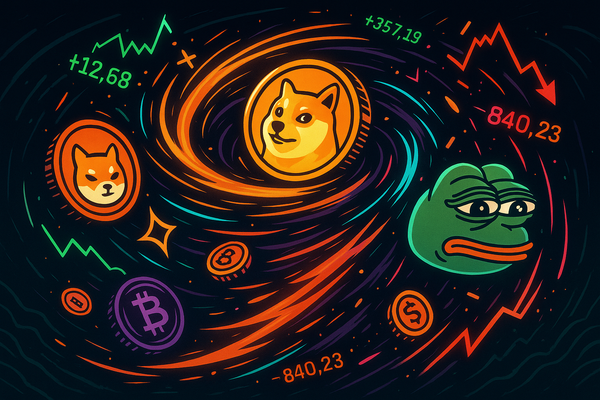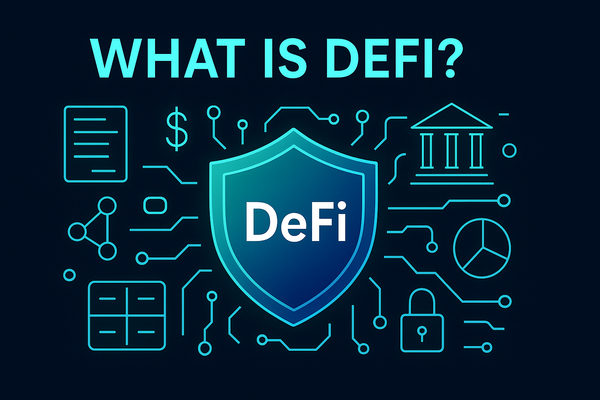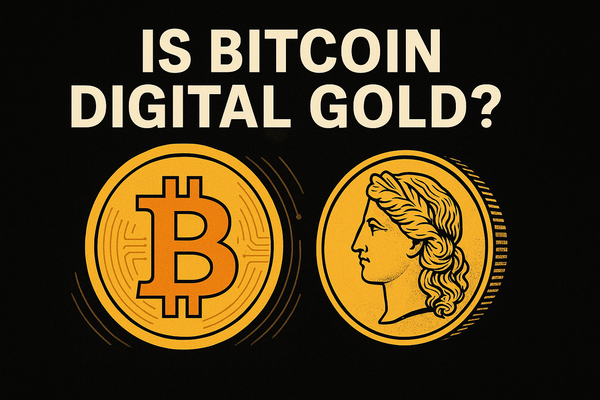What is Web3? The Next Evolution of the Internet Explained
Web3 is reshaping the internet by giving users ownership of their data, assets, and identities. Here's everything you need to know.
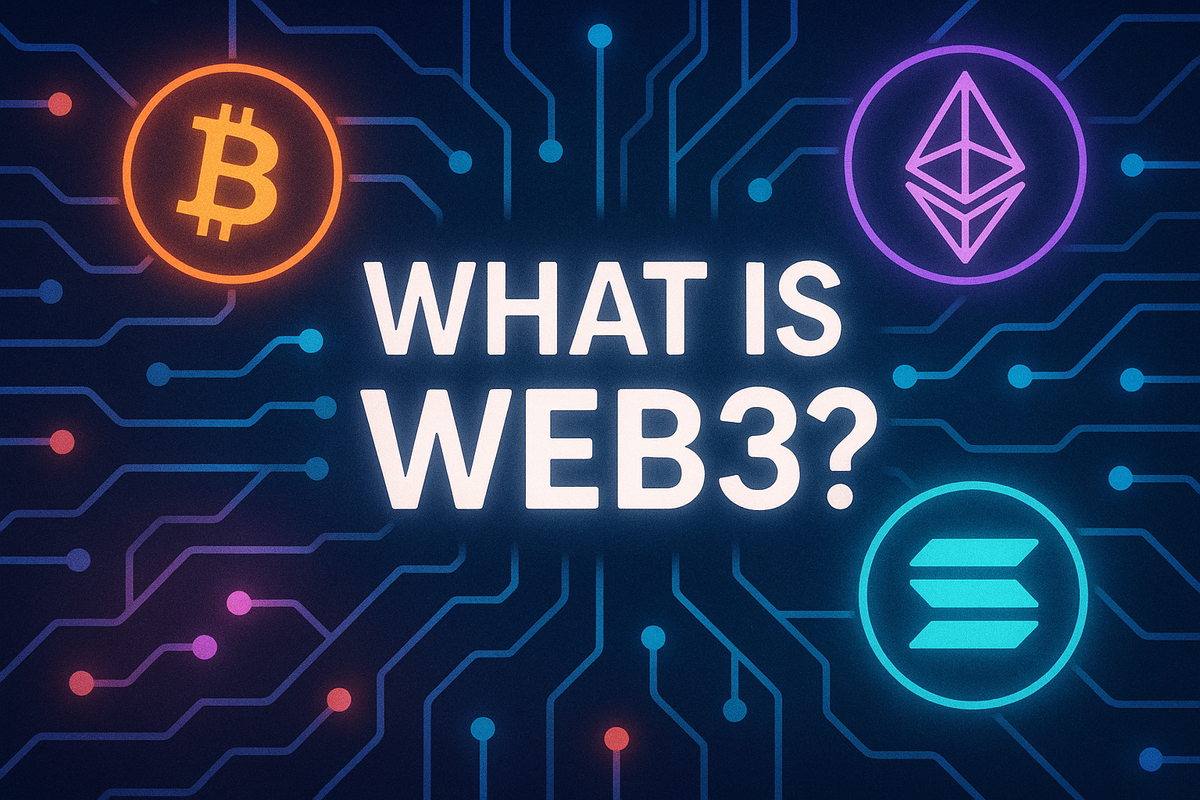
The internet has fundamentally reshaped society multiple times since its inception. Initially, the internet—dubbed Web 1.0—was primarily static, a vast repository of content consumed passively by users. It offered limited interaction, with pages akin to digital brochures rather than dynamic platforms.
The transition to Web 2.0 marked a significant shift toward interactivity, user participation, and the explosion of social media. This era introduced platforms like Facebook, YouTube, and Twitter, empowering users to generate content and engage actively online. However, this convenience and connectivity came at the cost of centralized control, data privacy concerns, and corporate dominance over personal data and digital identities.
Now, the internet is poised for another transformative leap forward with Web3. Driven by decentralized technologies, blockchain, and cryptography, Web3 aims to reclaim control from centralized entities, empowering individuals through transparency, digital ownership, and peer-to-peer interactions. This evolution promises a more equitable, secure, and user-centric digital experience, fundamentally reshaping how we interact online.
What Is Web3 Anyway?
Web3 is the next generation of the internet, centered on decentralization, blockchain technology, and digital ownership. At its core, Web3 represents a fundamental shift from the centralized control seen in Web 2.0—where platforms and services are governed by large corporations—to a decentralized model where users directly control their data, identity, and assets.
Built on blockchain and related decentralized ledger technologies, Web3 introduces trustless systems, removing the need for centralized intermediaries. Instead of relying on traditional gatekeepers like tech giants and financial institutions, interactions occur via peer-to-peer (P2P) protocols, smart contracts, and decentralized applications (dApps). These elements work together to ensure transparency, security, and autonomy.
A crucial characteristic of Web3 is its reliance on token economics and cryptocurrency-based incentives. Tokens serve multiple roles—facilitating transactions, enabling governance within decentralized autonomous organizations (DAOs), and allowing users to participate directly in platforms’ success. This token-based economy encourages community participation and aligns user incentives with platform growth and security.
In essence, Web3 aims to democratize the digital landscape, transforming internet users from passive consumers into active stakeholders and co-owners. This decentralization seeks not only to improve security and transparency but also to foster innovation through open, permissionless participation.
Core Principles of Web3
Web3 is built upon a set of foundational principles designed to reshape how users interact online, shifting control back into the hands of individuals. The primary principles underpinning Web3 include decentralization, permissionless access, trustless interactions, digital sovereignty, and native digital ownership.
Decentralization is central to Web3, emphasizing the elimination of single points of control and failure. Instead of data and power being concentrated in the hands of tech giants, authority is distributed across numerous nodes within a network, significantly enhancing resilience, transparency, and censorship resistance.
Permissionless access complements decentralization by allowing anyone to participate freely and openly. Unlike traditional internet services that require approval or centralized access control, Web3 platforms typically offer unrestricted access, empowering users regardless of geographic or socio-economic factors.
Trustless interactions leverage blockchain technology and cryptographic methods to enable direct interactions between users without relying on intermediaries or third-party trust. Transactions and interactions are secured and verified by the underlying blockchain network, making them inherently more transparent and secure.
Digital sovereignty embodies users' control over their data and digital identities. Web3 emphasizes user autonomy, enabling individuals to manage their personal information, control access to it, and decide how and when their data is shared or monetized.
Lastly, native digital ownership introduces verifiable, transparent ownership of digital assets through tokenization and non-fungible tokens (NFTs). Users gain indisputable proof of ownership and the freedom to trade digital goods transparently, something challenging under Web 2.0's centralized systems.
Together, these core principles offer a new paradigm designed to empower individuals, protect privacy, promote transparency, and stimulate innovation within the digital ecosystem.
Key Technologies Enabling Web3
Web3's ambitious goals rely heavily on several foundational technologies working together to decentralize the internet. These core technologies include blockchain networks, smart contracts, decentralized applications (dApps), decentralized storage, and decentralized autonomous organizations (DAOs).
Blockchain technology is at the heart of Web3. Serving as decentralized digital ledgers, blockchains securely record transactions across a distributed network. This transparency and immutability underpin trustless systems, enabling secure and verifiable interactions without intermediaries.
Smart contracts, automated scripts running on blockchain networks like Ethereum or Solana, execute agreements and transactions automatically when predetermined conditions are met. They eliminate the need for third-party oversight, dramatically reducing costs, enhancing efficiency, and removing biases inherent in traditional centralized systems.
Decentralized applications (dApps) are software applications built on blockchain networks, providing users with direct interactions on a peer-to-peer basis. Unlike traditional applications hosted by a central authority, dApps leverage blockchain infrastructure to enhance transparency, censorship resistance, and user autonomy.
Complementing dApps, decentralized storage solutions like IPFS (InterPlanetary File System) and Filecoin offer secure, distributed alternatives to traditional centralized data centers. These platforms empower users to store and retrieve data efficiently and securely without reliance on a single provider, significantly improving data resilience.
Finally, decentralized autonomous organizations (DAOs) represent entirely new organizational structures enabled by Web3 technologies. DAOs facilitate community-driven governance, enabling participants to make collective decisions transparently through voting systems encoded into smart contracts.
Together, these technologies create the foundation for a genuinely decentralized, user-focused internet, embodying the principles and promises of Web3.
Real-World Applications of Web3
Web3 is already impacting numerous industries through practical, real-world applications that showcase its potential beyond theory.
Decentralized Finance (DeFi) represents one of the most significant and transformative uses of Web3 technology. DeFi platforms enable users to access financial services—like lending, borrowing, and trading—without intermediaries such as banks. Examples include Uniswap, Aave, and Compound, which empower individuals with greater financial autonomy, lower fees, and enhanced transparency.
Non-Fungible Tokens (NFTs) have emerged as another prominent application, revolutionizing digital ownership and asset monetization. NFTs provide verifiable digital ownership of art, collectibles, and even real-world assets, giving creators new opportunities for monetization and ownership rights. Platforms like OpenSea and Rarible have popularized NFTs, leading to widespread adoption across industries such as entertainment, sports, and fashion.
Decentralized social networks seek to offer alternatives to centralized platforms by prioritizing user privacy, data ownership, and freedom of expression. Networks like Lens Protocol and Mastodon give users greater control over their content and interactions, challenging traditional centralized giants like Facebook and Twitter.
In supply chain management, Web3 technologies enhance transparency and traceability by securely tracking products from origin to consumer. Companies utilize blockchain-based solutions to verify authenticity, ethical sourcing, and compliance, significantly improving consumer trust and operational efficiency.
These applications demonstrate Web3's practical benefits, highlighting its potential to foster more transparent, equitable, and efficient systems across multiple sectors.
Benefits and Opportunities
Web3 brings significant benefits and new opportunities by reshaping digital interactions through decentralization and transparency.
A core benefit of Web3 is enhanced data ownership. Unlike centralized Web 2.0 services, Web3 gives users direct control over their personal data, allowing them to manage, share, or monetize it according to their preferences. This shift promises greater privacy and autonomy, significantly reducing dependence on tech giants.
Increased transparency is another critical advantage. Blockchain’s decentralized ledger publicly records transactions and interactions, minimizing the risk of fraud and manipulation. Users can independently verify actions, creating trust without the need for intermediaries.
Web3 also introduces new economic models and opportunities for creators. Tokenization enables direct monetization of creative work, benefiting artists, musicians, and content creators by reducing fees charged by platforms and intermediaries. This opens avenues for innovative business models, such as direct fan engagement through NFTs or crowdfunding via decentralized platforms.
Finally, Web3 has the potential to reduce barriers to innovation, fostering an inclusive environment where developers and users collaborate freely, independent of centralized gatekeepers. This open ecosystem encourages experimentation, accelerating technological advancements and creativity across industries.
Challenges and Criticisms
While Web3 presents significant promise, it also faces substantial challenges and valid criticisms that need to be acknowledged and addressed.
One primary concern is scalability, as decentralized systems currently struggle to handle transaction volumes comparable to centralized alternatives. Popular blockchain networks like Ethereum can experience high fees and congestion during peak periods, limiting their usability and accessibility for everyday transactions. While newer blockchain networks aim to solve these problems, widespread adoption still requires significant improvements.
Regulatory uncertainty also poses substantial hurdles for Web3 adoption. As decentralized systems and cryptocurrencies challenge traditional financial and regulatory frameworks, governments worldwide are struggling to establish clear rules. This regulatory ambiguity creates uncertainty for users, developers, and investors, potentially hindering innovation and mainstream acceptance.
Despite decentralization's ideals, another criticism points to centralization risks within supposedly decentralized networks. Token distribution inequalities and the dominance of influential stakeholders can concentrate power, undermining Web3’s fundamental principles. Decentralized platforms may unintentionally replicate centralized structures unless designed carefully with proper governance mechanisms.
Finally, the technical complexity and user experience barriers of Web3 applications pose challenges to mainstream adoption. Many current interfaces require users to have advanced technical knowledge, intimidating newcomers and limiting accessibility. Improving user experience remains crucial to broadening Web3’s appeal.
Addressing these challenges is essential to realizing Web3's full potential and ensuring a genuinely decentralized and accessible digital future.
The Future of Web3
The future of Web3 holds immense potential, with ongoing advancements likely reshaping various aspects of our digital and physical lives. As scalability improves and user experiences become increasingly intuitive, Web3 is poised for broader mainstream adoption.
Emerging integration with technologies such as artificial intelligence (AI) and the metaverse promises to amplify Web3’s impact. Decentralized platforms could provide foundational layers for immersive virtual worlds, redefining how people interact socially and economically. Similarly, combining AI and Web3 may foster smarter decentralized autonomous organizations (DAOs) and personalized user experiences, driving innovation at unprecedented levels.
Additionally, Web3 is set to influence global economies profoundly. The decentralization of financial systems (DeFi) could disrupt traditional finance, offering more inclusive and accessible financial services worldwide, particularly for underbanked populations.
However, achieving these ambitious visions depends significantly on addressing current challenges, such as scalability, usability, and regulatory clarity. Collaboration between technologists, regulators, and users will be crucial to ensure Web3 evolves sustainably and inclusively, ultimately fulfilling its promise as the next transformative wave of the internet.
What is Web3? FAQ
Web3 is the next evolution of the internet, emphasizing decentralization, blockchain technology, and empowering users with control over their data and digital assets.
Unlike Web2's centralized platforms controlled by corporations, Web3 operates on decentralized networks, granting users greater privacy, autonomy, and ownership.
dApps are applications built on blockchain networks, enabling peer-to-peer interactions without central authorities, enhancing transparency, security, and user autonomy.
A Decentralized Autonomous Organization (DAO) is a community-led entity without central control, governed transparently through rules encoded in smart contracts.
Web3 enhances security through decentralized blockchain technology, but it also introduces new risks, such as vulnerabilities in smart contracts and user errors.
